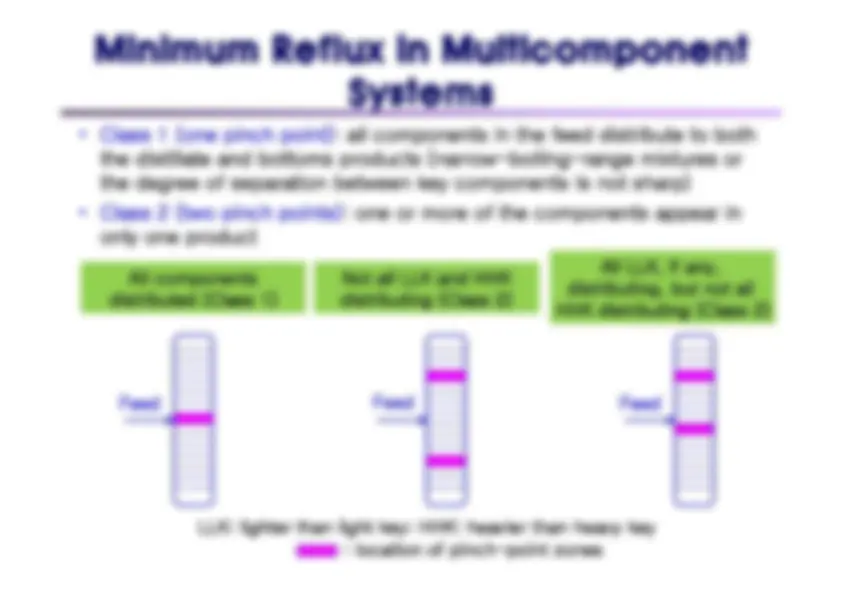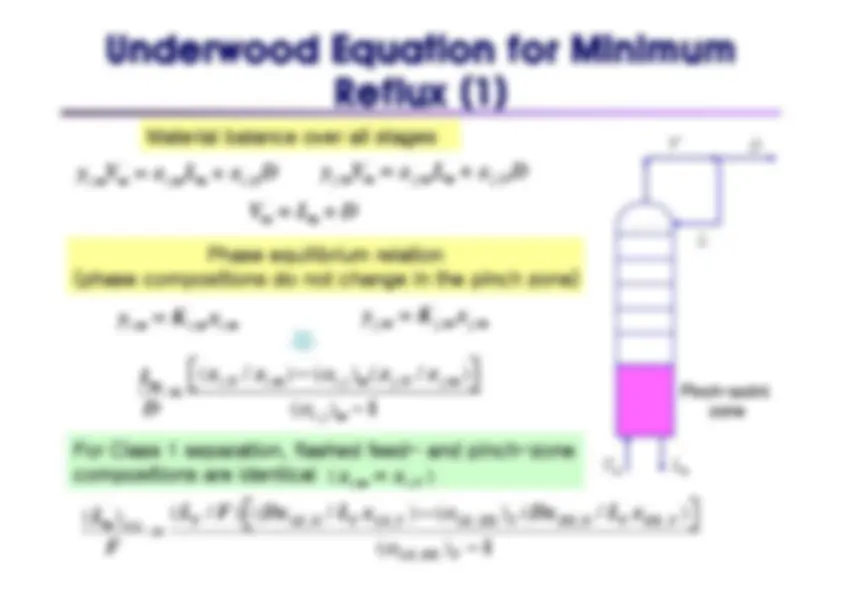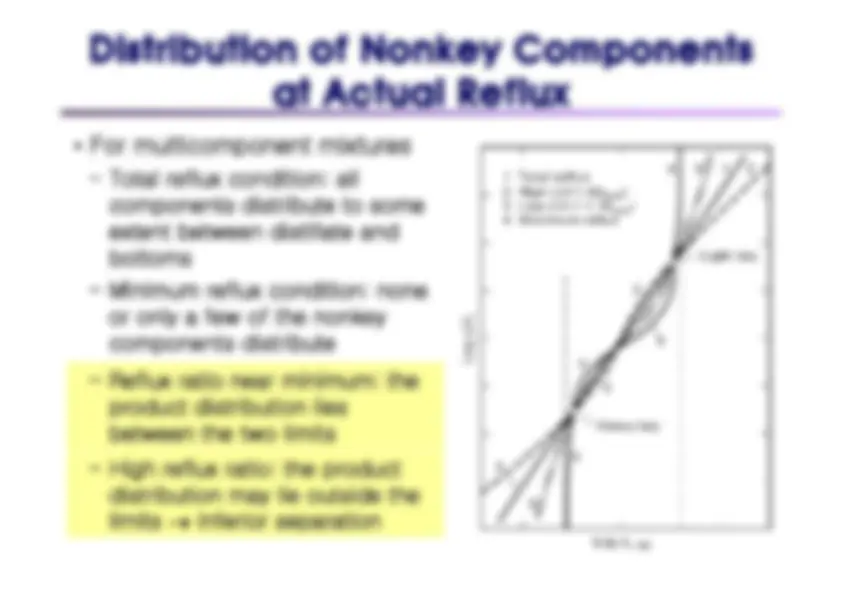






Study with the several resources on Docsity

Earn points by helping other students or get them with a premium plan


Prepare for your exams
Study with the several resources on Docsity

Earn points to download
Earn points by helping other students or get them with a premium plan
Community
Ask the community for help and clear up your study doubts
Discover the best universities in your country according to Docsity users
Free resources
Download our free guides on studying techniques, anxiety management strategies, and thesis advice from Docsity tutors
Underwood Equation for Minimum. Reflux (1). V. D. Material balance over all stages ... Based on the Fenske equation (at total reflux conditions).
Typology: Study notes
1 / 8

This page cannot be seen from the preview
Don't miss anything!





Most of the stages are crowded into a constant
composition zone
Binary system, ideal conditions
Binary system, nonideal conditions
Feed
Feed
: location of pinch-point zone
V^
D
Material balance over all stages
,^
,^
,
i^
i^
i D
y^
x
x^
^
^
^
^
,^
,^
,
j^
j^
j D
y^
x
x^
^
^
^
L
Phase equilibrium relation
(phase compositions do not change in the pinch zone)
,^
,^
,
i^
i^
i
y^
x
^
^
,^
,^
,
j^
j^
j
y^
x
^
^
Pinch-point
zone
,^
,^
,^
,^
,
,
i D
i^
i j
j D
j
i j
x
x
x
x
^
^
V∞
L∞
For Class 1 separation, flashed feed- and pinch-zonecompositions are identical
,^
,
i^
i F
x^
x
^
,^
,^
,^
,^
,
min
,
F^
LK D
F^
LK F
LK HK
F^
HK D
F^
HK F
LK HK
F
Dx
L x
Dx
L x
^
-^
,^
,^
,^
,^
,
min
F^
LK D
F^
LK F
LK HK
F^
HK D
F^
HK F
Dx
L x
Dx
L x
^
,
(^
LK HK
F
Replace
with component
i
,^
,^
,^
,^
,
min
F^
i D
F^
i F
i HK
F^
HK D
F^
HK F
Dx
L x
Dx
L x
^
, (^
i HK
F
,^
,^
,^
,^
,^
,
i D
i HK
F^
LK D
LK HK
F^
i HK
F^
HK D
Dx
Dx
Dx
,^
,^
,^
,^
,
F^
i F
LK HK
F^
F^
LK F
LK HK
F^
F^
HK F
L x
L x
L x
, ,
i D i F Dx Fx ^
For all nonkey componentsin a Class 1 separation
-^
min min
R^
R
S^
S
min
/
,^
,^
,^
,
/
1 2 1 2
S^
S
LK D
LK F
HK F
HK D
B^
F
,^
,^
,^
,
LK F
LK B
HK B
HK F
D
F
-^
N
R
.
,^
,
0 206
2
HK F
LK B
R^
Feed
N
R
,^
,
S^
LK F
HK D
N
S
-^
components distribute to someextent between distillate andextent between distillate andbottoms
Minimum reflux condition
none
or only a few of the nonkeycomponents distribute
product distribution liesbetween the two limitsbetween the two limits
distribution may lie outside thedistribution may lie outside thelimits
inferior separation